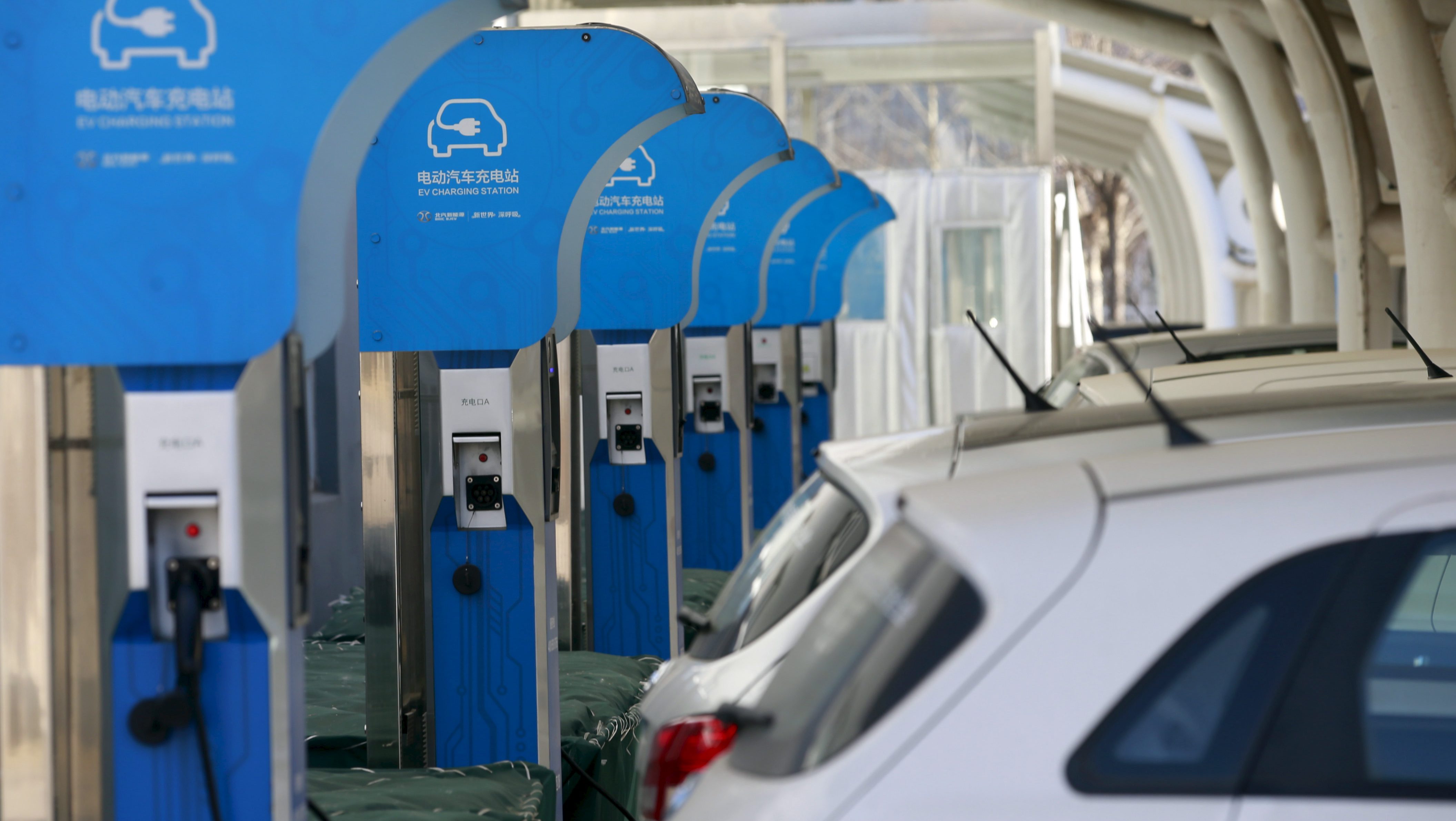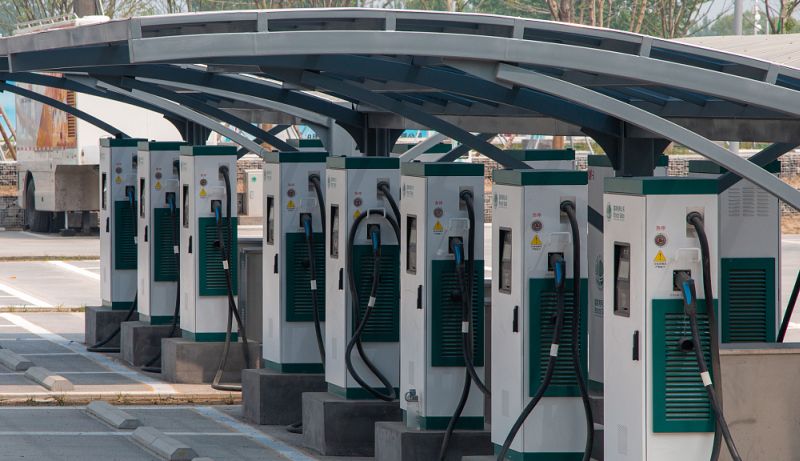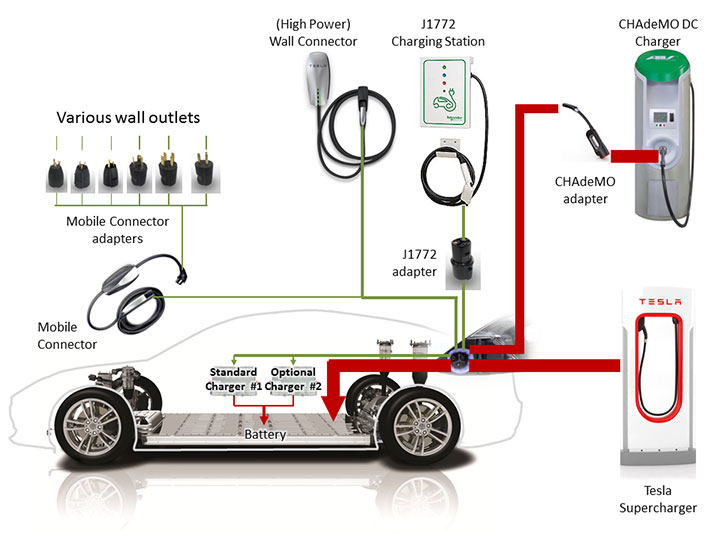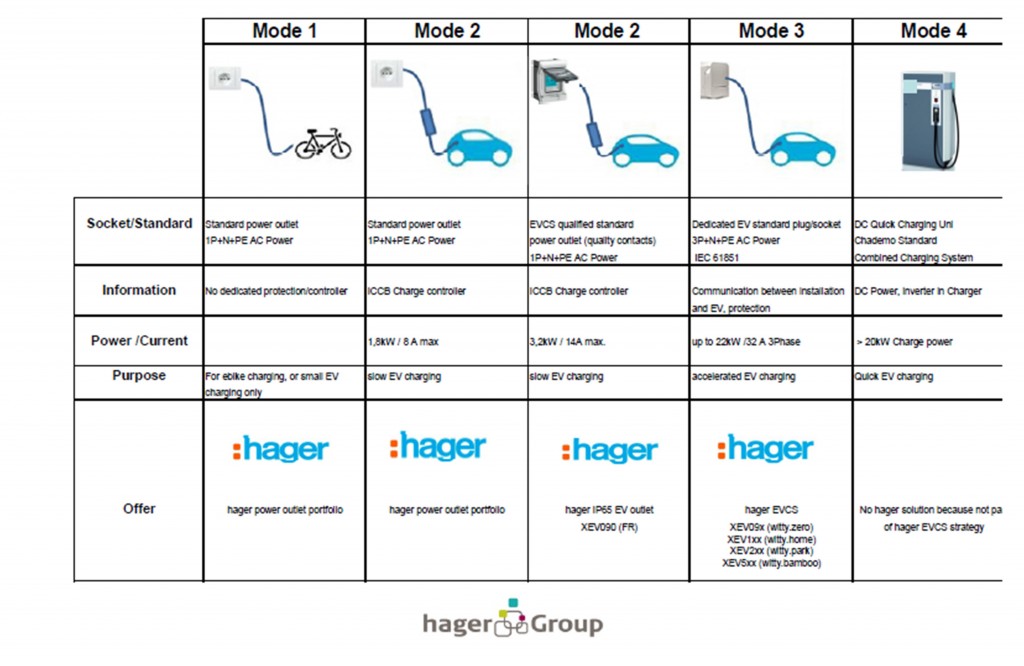Basic Understanding New Energy Charging Stations
Overview of charging stations
A charging station is a charging facility for charging electric vehicles, similar to a gas dispenser in a gas station. It can be fixed on the ground or walls, installed in public buildings (such as public buildings, shopping malls, public parking lots, etc.), and residential parking lots or charging stations. It can charge various types of electric vehicles according to different voltage levels. The input end of the charging station is directly connected to the AC power grid, and the output end is equipped with charging plugs for charging electric vehicles.
Charging station industry chain
upper reaches
The upstream of the charging pile market are charging pile equipment manufacturers and various charging pile products. The usage environment of charging stations may be under conditions such as strong sunlight, severe cold, wind and rain, open flames, gasoline contact, etc. Therefore, safety standards are very strict.
Charging piles can be divided into DC charging piles, AC charging piles, AC DC charging piles, etc. The main body and components involved include charging modules, motors, chips, contactors, circuit breakers, shells, plugs and sockets, cable materials, etc.
middle reaches
The middle reaches of charging stations are operators who operate large charging stations or provide charging station services. In order to better serve electric vehicles, many operators have built large charging stations to provide charging services for electric vehicles. In addition, charging stations are also set up in residential areas, shopping centers, commercial buildings, schools, governments, and other places to meet the demand for electric vehicles.
downstream
The downstream applications of the charging pile market are various types of electric vehicles. With the continuous promotion and application of new energy vehicles, the continuously expanding electric vehicle market has brought a large demand for the charging pile market.
At present, the models of electric vehicles include sedans, SUVs, MPVs, buses, trucks, specialized vehicles, etc.
How does the charging station charge?
Charging an electric vehicle with a charging station is actually charging the battery in the electric vehicle. The charging principle is that after the battery is discharged, direct current is used to pass through the battery in the opposite direction to the discharge current, restoring its working ability. This process is called battery charging. When charging a battery, the positive pole of the battery is connected to the positive pole of the power supply, and the negative pole of the battery is connected to the negative pole of the power supply. The charging power voltage must be higher than the total electromotive force of the battery. Generally speaking, there are two charging methods for charging piles, namely constant current charging and constant voltage charging. In the new version of electric vehicle terminology implemented on May 1st, these two charging methods have been defined: constant current charging, which charges the battery with a controlled constant current; Constant voltage charging is a method of charging a battery at a controlled constant voltage. So what are constant current charging and constant voltage charging specifically? The following is a detailed explanation of these two charging methods that the author has learned.
Constant current charging method: Constant current charging method is a charging method that adjusts the output voltage of the charging device or changes the series resistance with the battery to maintain the constant charging current intensity. The control method is simple, but due to the gradual decrease in the acceptable current capacity of the battery as the charging process progresses, in the later stage of charging, the charging current is mostly used to electrolyze water, generate gas, and cause excessive gas output. Therefore, the stage charging method is often chosen.
Constant voltage charging method: The voltage of the charging power supply remains constant throughout the entire charging time, and as the battery terminal voltage gradually increases, the current gradually decreases. Compared with the constant current charging method, its charging process is closer to the optimal charging curve. Charge quickly with a constant voltage. Due to the low electromotive force of the battery during the initial charging stage and the high charging current, the current will gradually decrease as the charging progresses. Therefore, a simple control system is only needed.
What types of charging stations are there?
There are currently two common types of charging stations on the market, one is DC charging station and the other is AC charging station.
DC charging piles: DC charging piles are fixed and installed in some public places outside of electric vehicles, such as residential communities, residential parking lots, commercial areas, service areas, outdoor parking lots, electric vehicle charging stations, and other places. It is a charging device that provides DC power supply for off-board electric vehicle batteries by connecting to the public power grid. Because DC charging stations can directly charge the batteries of electric vehicles, usually using three-phase four wire or three-phase three wire power supply, the output voltage and current can be adjusted in a large range, which can achieve fast charging of electric vehicles. Therefore, DC charging stations are also known as fast charging. Due to its high output power, DC charging stations generally have specifications such as 30kW, 60kW, 80kW, 120kW, 150kW, 180kW, etc.
AC charging pile: AC charging pile is also a power supply device that is fixed and installed in some public places outside of electric vehicles, providing controllable unidirectional AC power or three-phase AC power for the on-board charger of electric vehicles. It should be noted that the AC charging station itself does not have charging function, it only provides power output, and can charge the battery of the electric vehicle by connecting it to the on-board charger of the electric vehicle. Due to the generally low power of electric vehicle on-board chargers, AC charging stations cannot achieve fast charging, and therefore AC charging stations are also known as slow charging. The output power of the AC charging station is not very large, usually 3.5kW, 7kW, 15kW, etc.
Difference:
There are two differences between DC charging piles and AC charging piles. 1、 When charging, the DC charging station can directly charge the battery of the electric vehicle, so there is no need for an on-board charger, while the AC charging station cannot directly charge the electric vehicle battery, so an on-board charger is needed. The second difference is the charging duration. The charging speed of DC charging stations is relatively fast, usually taking only a few minutes to two or three hours for electric vehicle batteries to fully charge, while the charging time for AC charging stations to fully charge electric vehicle batteries is much longer, usually taking about eight hours.




